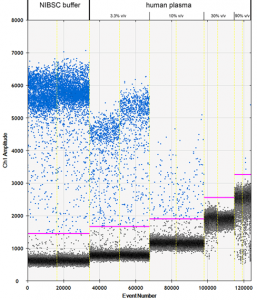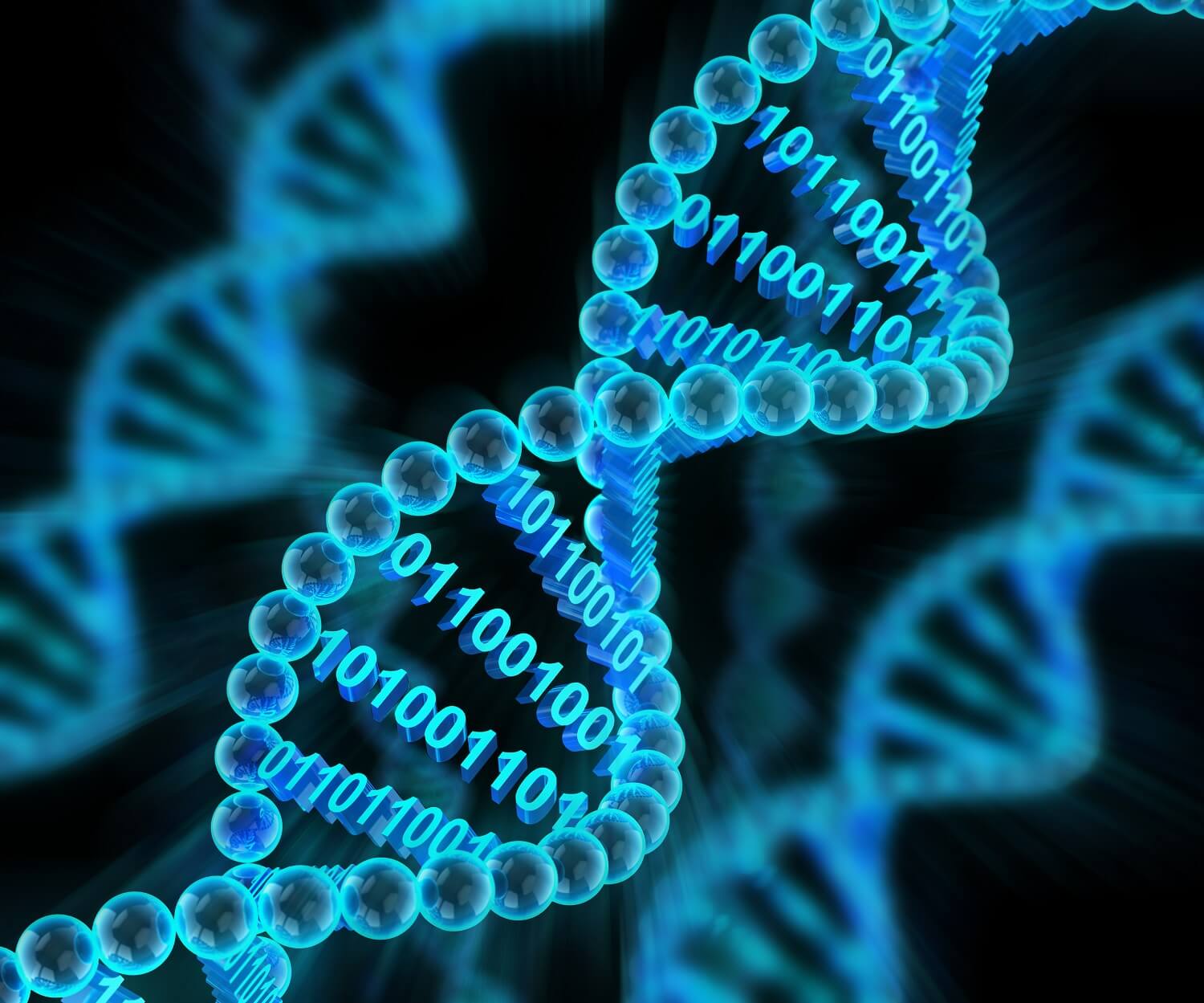Extraction of DNA before its amplification is an essential step for the measurement of any DNA target. It releases the DNA and removes substances inhibitory to PCR that are initially present in the matrix.
But what if we are interested in the biological units, human cells, viral particles or bacteria? Can we infer the concentration of biological units from the concentration of its nucleic acids? How accurate is that? The short answer is ‘yes, but…’
Things that are good to know:
- Target copy number per biological unit. With this knowledge we can calculate the concentration of biological units from the concentration of the target DNA copies. Provided of course that we have made sure to separate target copies from each genome through e.g. restriction of DNA. Most real-time PCR tests are developed to amplify target sequences with several copies per genome because as a rule such tests have better analytical sensitivity than the tests targeting single targets. Depending on the target sequence the number of target sequences per genome can also vary among strains or even within strains under different environmental conditions.
- Efficiency of DNA extraction. Each DNA extraction has certain efficiency. This efficiency is not only dependent on the matrix type but can also vary among samples of the same matrix type, among operators, with target concentration and many other factors. Highly standardized approach is needed to sample preparation and DNA extraction to minimize these effects and to be able to accurately quantify our target DNA in samples without assessing DNA extraction efficiency in each and every one.
What if we do not know the target copy number per biological unit and cannot standardize the sample preparation?
An alternative approach to quantifying biological units is their direct analysis in dPCR. In this approach bacteria or viruses are added to the reaction mixture and distributed among droplets together with all the reagents. The initial step in PCR amplification, usually a denaturation step of 10 minute incubation at 95 °C, adequately releases DNA from the cells within the droplets. While this approach may not work for all matrices, it removes the variability introduced with DNA extraction, and is straightforward to use and interpret. Moreover, it can provide quantification of biological units with adequate accuracy for most needs.
The approach of direct dPCR quantification of the biological units is worth exploring if our targets are small enough to fit into droplets or compartments, and if we can reasonably assume that DNA will be efficiently released during the PCR amplification. Minimizing the free target DNA in our samples improves the accuracy of quantification.

Determination of direct quantification of viral DNA from different matrices. The left column represents the direct quantification of the 10× WHO reference material in NIBSC buffer. The columns on the right represent the 1× WHO material spiked into different concentrations of human plasma, which resulted in a 10× dilution of the initial material. (2)
Direct quantification of bacteria
It is likely that the direct dPCR quantification of bacteria is possible for most Gram-negative bacteria. Cells in the logarithmic phase of growth provide the most accurate estimate of the living cells and are commonly used to prepare in-house reference materials and controls in plant pathology. High accuracy of absolute quantification with direct dPCR was demonstrated for two major plant pathogens, Erwinia amylovora and Ralstonia solanacearum, causing fire blight and bacterial wilt of many plants. Apart from correlating the target DNA copies after DNA extraction with the initial bacterial counts (colony forming units) it allowed accurate estimation of the efficiency of the DNA extraction (1). The ability to accurately estimate losses during DNA extraction supports laboratories in decisions on fit for purpose extraction methods as well as in comparability of results especially in diagnostics.
Direct quantification of viruses
To investigate the potential of dPCR for direct quantification of viruses, human cytomegalovirus (HCMV) has been quantified without prior extraction using two dPCR platforms (2). Two materials with assigned viral concentrations were analysed using direct quantification and quantification after the extraction step. Results of direct quantification were very repeatable and were in closer agreement with the actual viral load than that of the extracted DNA. This indicates that direct quantification using dPCR is a valuable approach for the characterisation of reference materials and materials for external quality assurance schemes.
Would you like to know more about dPCR?
At the National Institute of Biology we see dPCR as an exciting and very promising tool for many different fields where absolute quantification is needed or provides valuable additional information. Share the experience of dPCR with us by joining the dPCR EXPERIENCE workshop in October 2016 for a hands-on training with three different dPCR platforms!
By Tanja Dreo, PhD and Mojca Milavec, PhD from National Institute of Biology, Ljubljana, Slovenia
References:
1. Dreo, T., Pirc, M., Ramšak, Ž., Pavšič, J., Milavec, M., Žel, J., Gruden, K. 2014. Optimising droplet digital PCR analysis approaches for detection and quantification of bacteria: a case study of fire blight and potato brown rot. Analytical and Bioanalytical Chemistry, 406 (26): 6513-6528.
2. Pavšič, J., Žel, J., Milavec, M. 2016. Digital PCR for direct quantification of viruses without DNA extraction. Analytical and Bioanalytical Chemistry, 408: 67-75.










